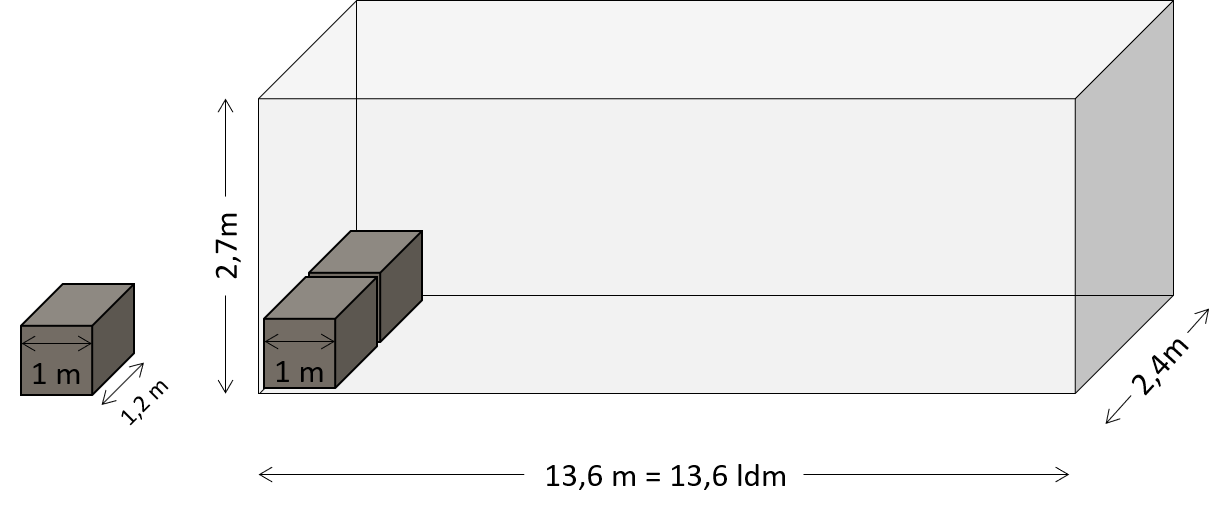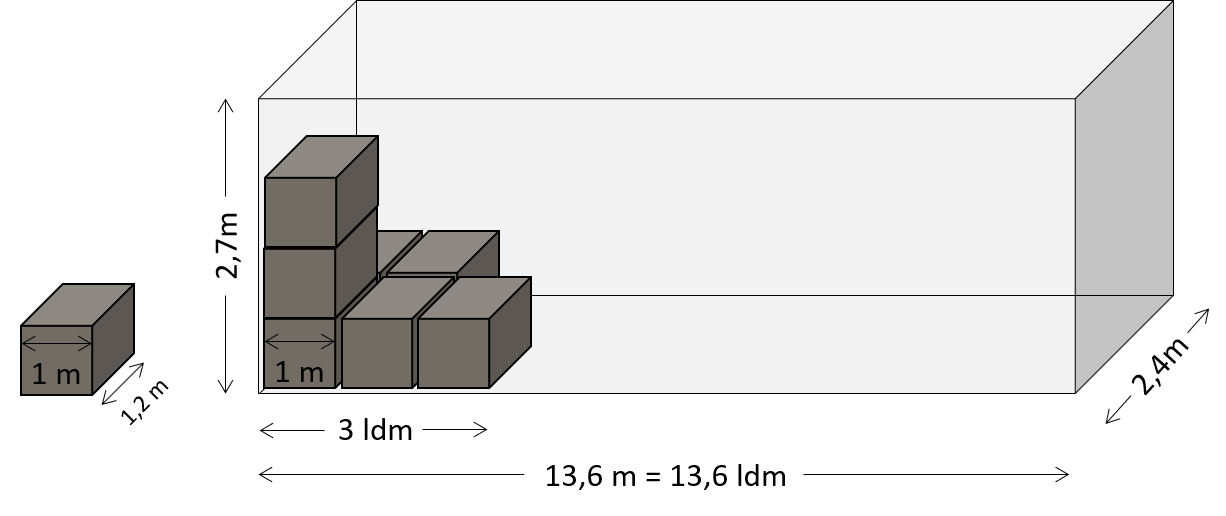Calculate Loading Meter (LDM Meaning)
Use IMPARGO to calculate LDM and full route costs — all in the free plan. Try the IMPARGO Transport Management Platform and streamline your logistics planning with our loading meter calculator and truck cost tools.
On This Page
- LDM meaning (loading meter)
- How to calculate truck loading meters
- Load meter calculation
- Inaccuracies when calculating the loading meters
- Calculation of the load meters with several load carriers
- A small task for calculation
LDM meaning (loading meter)
The number of loading meters of a load specifies how many meters of the length of the means of transport are required for a particular freight. Loading meters are therefore a measure of the load on a truck and are used to plan and settle the available loading space in the means of transport. In logistics, this is referred to as ldm meaning — a key value in optimizing freight capacity.
How to calculate truck loading meters
An example: a semi-trailer is 13.6 m long, ~2.7 m high and ~2.4 m wide. Regardless of the height and width of the load, one loading meter is always one meter in length of the loading area. The truck therefore has 13.6 loading meters (ldm).

Depending on the load carrier type (e.g. Euro pallet), different arrangements can use the same number of load meters. Stackability also affects the LDM value. In the example below, from left to right, 4, 2, and 1 pallet configurations each take up 1 LDM.

PS: Tired of manual loading meter calculations? Try the “Loading Units” feature in the IMPARGO Transport Management Platform. It lets you define loading units directly in your planning process and ensures clear communication with all parties involved.
Why use the Loading Units feature?
- Easily add loading units while creating truck tours. The system keeps everyone updated with exact cargo details.
- Get automatic LDM calculations based on your input — no manual math required.
- Add, edit, or remove units in just a few clicks through an intuitive interface.

Load meter calculation example
The formula for calculating the load meters in road freight logistics for a load carrier is:
Load carrier length x load carrier width / 2.4 = load meterExample for a Euro pallet:
1.2 m x 0.8 m / 2.4 m = 0.4 ldmIf the goods can be stacked, apply the stacking factor:
1.2 m x 0.8 m / 2.4 m / 2 = 0.2 ldmMultiply by the number of load carriers:
1.2 x 0.8 / 2.4 / 2 * 16 = 3.2 ldm
Inaccuracies when calculating the loading meters
Be aware that the formula isn’t always precise. In some configurations, removing load units might not reduce the actual space needed due to stacking limitations.

Calculation of the load meters with several load carriers
For multiple load carrier types, calculate LDM per type and sum them:
1.2 m x 0.8 m / 2.4 m / 2 * 16 = 3.2 ldm1.2 m x 1.6 m / 2.4 m / 3 * 6 = 1.6 ldm3.2 ldm + 1.6 ldm = 4.8 ldm
A small task for calculation
A semi-trailer with a length of 13.6 metres and an internal height of 2.7 metres shall be loaded with 40 Euro pallets, each 1.2 x 0.8 x 1 m. The pallets can be stacked.
Calculate the stacking factor:
2.7 m / 1 m = 2.7 → stacking factor = 2Final LDM:
1.2 x 0.8 / 2.4 / 2 * 40 = 8 ldmA simple loading meter calculator can be found here.

